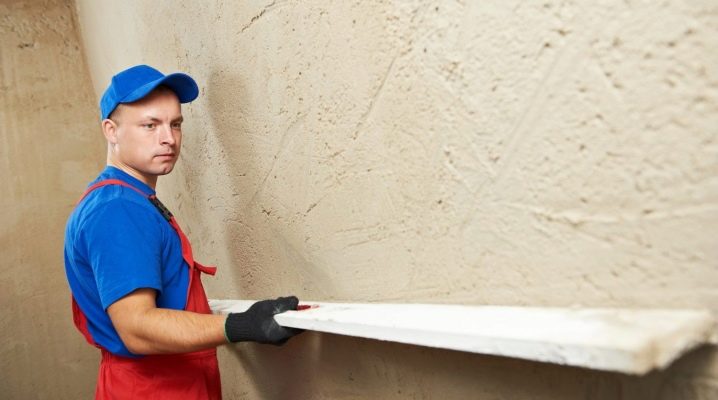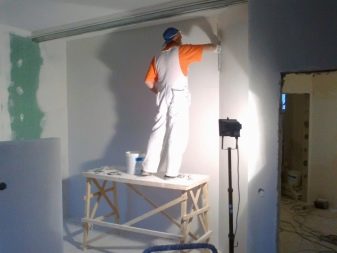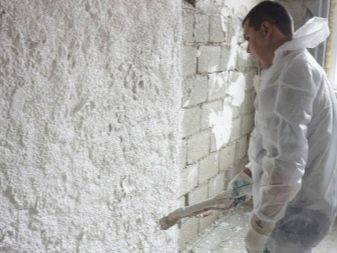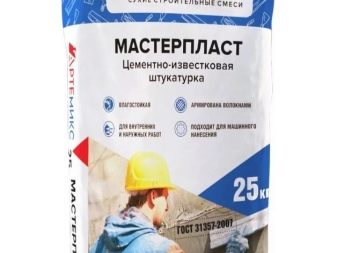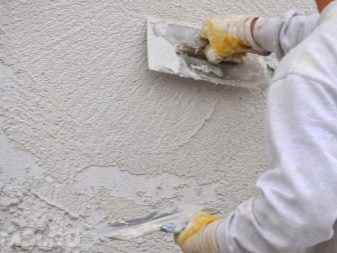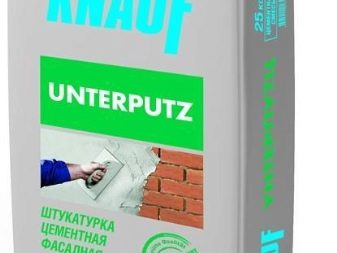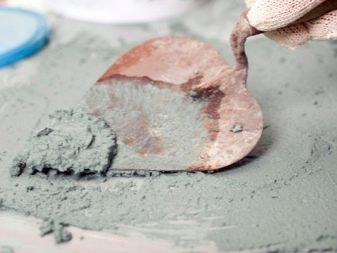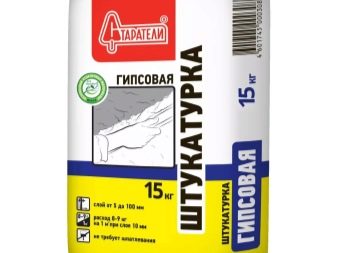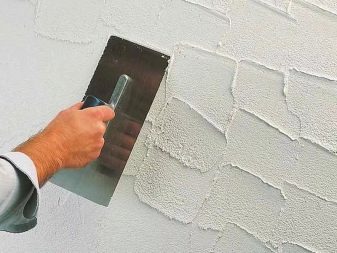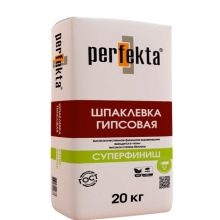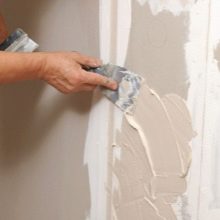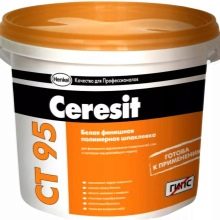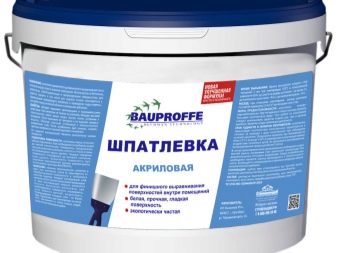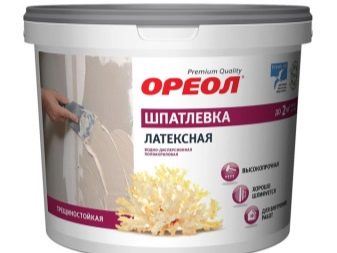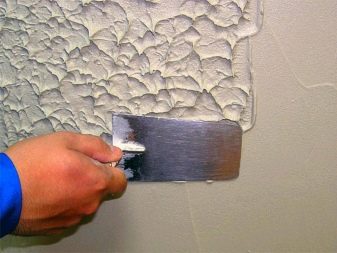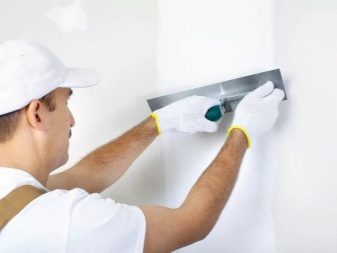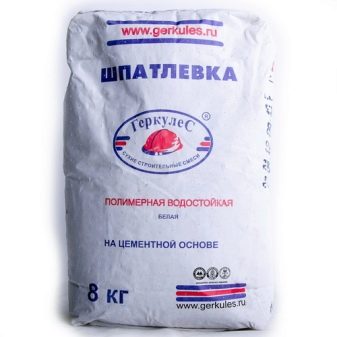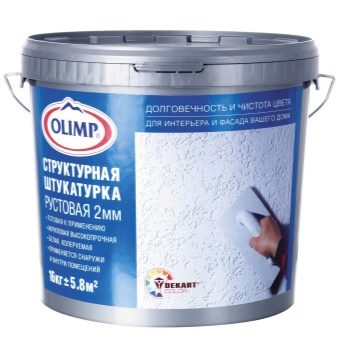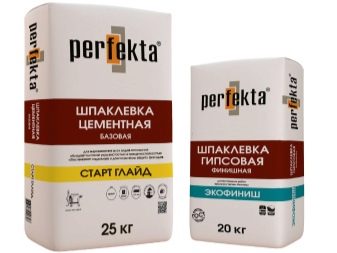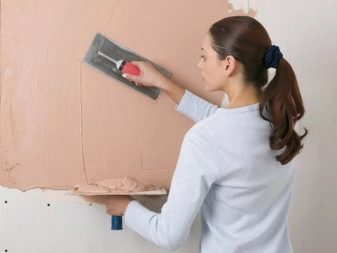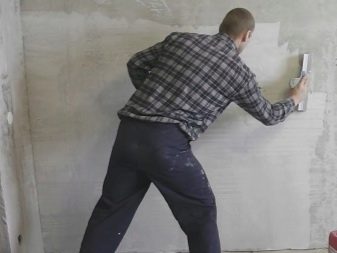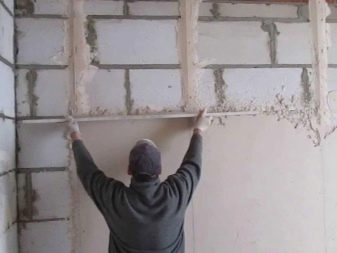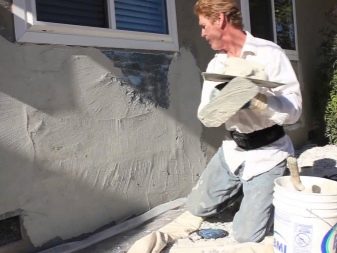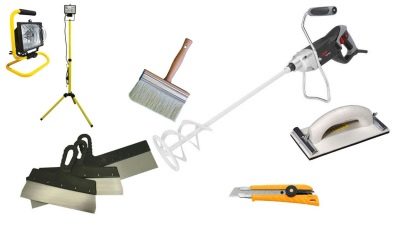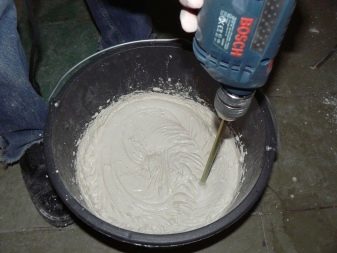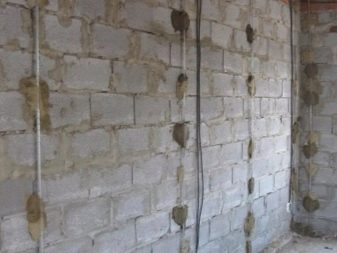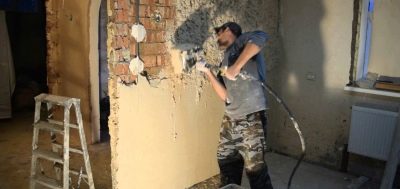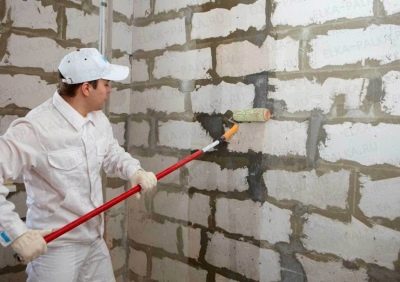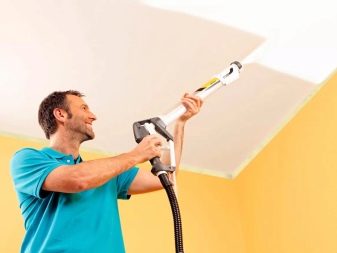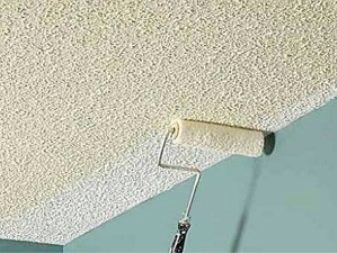Plaster and putty: what's the difference?
The creation of any interior of housing begins with the repair work, the main task of which is considered not only the decorative finishing of surfaces, but also their preparation for the subsequent design. In order for the building material to firmly secure to the base and give the room an aesthetic appearance, it is necessary to first align the walls and ceiling. To do this, plaster and putty are applied to the surface of the floors.
To date, this finishing material is presented in a huge range, but in order to properly carry out the work, you need to know its features and distinctive characteristics.
Features plaster mix
Plaster is considered a universal building mixture, it is often used to level ceilings, walls and other types of surfaces. Plaster produced in three types, each of them has individual properties, has its own pros and cons.
The limestone-based material is considered to be the most sought-after.It is used for interior work. The composition is available in price and easy to apply. In addition, lime plaster is made from ecological raw materials, so it is absolutely harmless to human health. The only disadvantage of the product is that it is not too durable and quickly loses its original appearance.
You can also plaster the ceiling and walls with a mixture cement based. It is used to repair both inside and outside the building. The main feature of this plaster is considered to be low price and high quality. The material has a plastic structure, so it quickly acquires the desired shape on the surface, it protects coatings from moisture well and is suitable for decorating walls made of brick, concrete and foam concrete.
Cement plaster can eliminate minor defects, for which it is applied to the walls with a thick layer of 2 cm or use a reinforcing mesh, thanks to which the base can be leveled by 5 cm. In addition, the product is characterized by high thermal insulation.
For interior decoration and also use gypsum plaster. The material, although considered to be ductile in operation, does not withstand moisture and mechanical stress.Thanks to its unique structure, surfaces can be quickly and easily aligned with a large area. Such mixtures are applied with a small thickness - up to 5 cm.
They dry quickly and allow already 15 minutes after alignment to begin the subsequent process of decoration.
Characteristics of putty
Putties are a universal finishing material that is produced of several types. Most often, craftsmen choose polymer, gypsum and cement putty for work. Each of these types of products is designed for specific applications. For example, the cement mixture is well suited for coating surfaces that are planned to be subsequently decorated with heavy materials.
It is also convenient to putty the walls with gypsum-based mixtures, but this means is unstable to moisture and temperature changes, it can deform and does not withstand mechanical effects. Therefore, it is best to purchase polymer plaster.
In the process of its manufacture, various polymers are added in the form of acrylic and latex, in connection with which the characteristics of the material may vary as follows:
- Acrylic Compound. Allows you to carry out quality work inside and outside buildings. Such raw materials perfectly cope with sudden changes in temperature and moisture, so they can finish the walls in rooms with non-standard microclimatic conditions.
- Latex composition. It is a universal means for leveling grounds, but is best suited for internal repair. Polymer putty is odorless, dries quickly and hides well the defects of the walls.
Differences
After the rough work has been completed, you can proceed to the immediate finishing of the walls, but at this stage, many craftsmen are faced with the question of choosing a building material, since the putty is significantly different from plaster. The difference lies not only in the components, but also in the application of the mixtures. In addition, dried plaster leaves a relief layer with a porous structure, and the putty gives the surface density and smoothness.
Plaster is usually chosen when it is necessary to cope with deep cracks and irregularities. It allows you to eliminate the curvature of the walls, so it is applied with a thick layer.As for the putty, this material consists of small particles and it is used for coatings to smooth out the roughness and minor defects. The putty is sandable, so after its application the surface gets the perfect look and is considered to be completely ready for interior decoration.
To increase the leveling effect, it is recommended to use these two products at the same time, since they cannot replace each other.
In addition, the main difference between plaster and putty is that the first mixture acts as a base layer, and the second is the final coating. Since the materials differ in the composition of the components, they require different times for drying. For example, the plaster can dry for at least two days, and the walls, filled with putty, are ready to decorate after a few hours.
Application area
Before you begin finishing activities using putty and plaster, it is important to take into account the nuance that these materials have their own individual characteristics of use. Usually putty mixtures are chosen to align the window slopes, ceiling and walls.To do this, they are purchased in a finished paste-like form, or independently produced by mixing the dry ingredients with water. At the same time, the main task of the putty is not only leveling the base, but creating the most smooth surface on it.
This material is available in two types:
- starting;
- finish
Starting products are suitable for sealing cracks and small defects, and finishing is chosen after all the work is done, when the base needs to be prepared for painting, wallpaper or other decor. It is worth noting that starting and finishing putty is strictly forbidden to mix, because the result is a non-uniform structure and such a layer will quickly crumble.
The starting coating is applied directly to the plaster in one or several layers, and the resulting effect is fixed with the finishing one. In addition, the finishing putty is used to remove small scratches and seams between drywall or slabs.
Plaster is characterized by another area of application - aerated concrete, brick, cement and concrete surfaces are coated with its composition. The plaster is intended for coarse surface finish,its layer should not exceed 50 mm, but if it is necessary to cover the walls tightly, then it is best to additionally use a special reinforced mesh.
Plaster is carried out at the very beginning of the preparation of the walls and ceilings, after the old coating has been dismantled and the foundation has been cleaned. This material is produced in a dry form, therefore before using it, it is well mixed in the right proportions with water until a uniform consistency is formed.
How to apply?
Any surface finish must be made of high quality and, upon completion of the work, not only look beautiful, but also hold securely. To improve the performance characteristics of the decorative material, it should be applied on a well-prepared base. To do this, the coating is carefully leveled and make its surface smooth with plaster and putty. In that case, if the irregularities are less than 5 mm, then use a finishing putty. When huge cracks and pits recommended to apply plaster. Each of these products has individual properties, so the process of their application varies.
When working with plaster, first remove the remnants of the brick solution that protrude on the walls, then determine the point of the protrusion using a level and calculate the maximum thickness of the mortar layer. After this, surface preparation begins and the primer is made.
To align the walls, it is not necessary to immediately cover their entire area, usually this is done in parts. To simplify the delineation of zones will help lighthouses.
The mixture is prepared easily. Dry powder is poured into a special container and according to the instructions on the label is mixed with water until a homogeneous mass. As a rule, the production of the solution takes no more than half an hour, after which it can be used.
The resulting mixture is applied to the surface with a spatula and level with a rule. It is important to control the horizontal and vertical coverage. The remains of the solution are removed, and then you can proceed to the alignment of another site.
Work with finishing putty is carried out in the case when the cracks do not exceed 2 mm. The finished mixture is applied to the walls by spraying or a spatula. Before starting the alignment, it is necessary to prime the surface.To putty evenly distributed over the base, the spatula is first recommended to hold at an angle of 60 degrees, and then gradually reduce its inclination. It is necessary to coat the wall with horizontal and vertical strokes. The finishing putty dries within 24 hours, after which it can be sanded and applied decorative material in the form of paint or wallpaper over it.
Often, in order for the surface of the walls and ceiling to become attractive, they use textured plaster in their finish, which, unlike the usual one, gives the coating an unusual decor.
It should be immediately noted that the process of applying this material is not considered simple, and therefore requires the implementation of certain techniques.
Since plastering is accompanied by dirt and dust, before it starts you need to remove all the furniture from the room and cover things.
The surface of the ceiling or walls is treated with a primer layer, which helps not only to conveniently distribute the solution, but also eliminates minor flaws. Textured compositions can be applied in various ways. The most popular is the texture using a roller.It is not particularly difficult and even a novice master can handle it. The most important thing is to properly prepare the solution and ensure that there are no lumps in it.
In addition, textured finish can be done using a spray technique. Unlike other methods, spraying is quick and ensures a uniform laying of the layer. One of the most difficult types of applying textured putty is considered the "Venetian ceiling." This technique is characterized by a sophisticated finish, so it is best to entrust it to professional professionals.
If there is a desire to create an original ceiling in the room, then you can experiment and cover it with a textured imprint. For work, you need a special machine, it is attached to the handle and give the surface the desired texture. In this case, the imprint must be done well, otherwise the composition will be fuzzy and vague.
Each of the above types of plastering and putty has its pros and cons, allows you to create a beautiful design in the rooms. Therefore, before starting to design a design, it is necessary to consider all the nuances of the decor and decide on the necessary building material.
Regardless of how the previous coating was, initially it is completely dismantled, the base is cleaned, the walls and ceiling are covered with a primer, and then the desired type of plaster and putty is chosen.
It is recommended to combine two materials at the same time and first use plaster, and then fix it with putty.
How to make decorative plaster yourself, see below.
